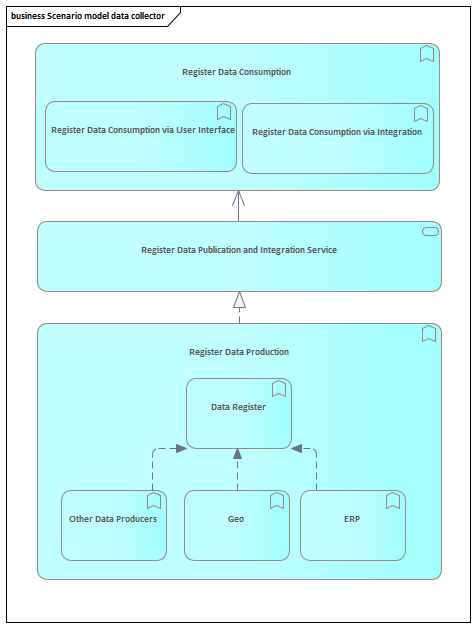
In this scenario data is collected form the various data producing applications and combined and standardized in the master data register. This means that data is modified in one of the data producing applications and eventually enriched in the data register. The data register is mainly a data replication with a standardized data model of the other data producers. An example is a datawarehouse
Advantages
- All data directly integrated at hand.
- Standardization of data is possible within the Data Register
- There is a possibility to enhance data by intelligently combing it to new information.
- High availability only for the data register when consumers need a high availability
- Data validation can be implemented in the system where it is most advantageous/efficient
- Reuse of screens, validations, existing data integrations and workflows
- Supports a iterative migration to a more centralized (register) scenario
Disadvantages
- When integration of data is asynchronous the data is not the same as in source systems on every moment. This will not be a problem if timing is not an issue.
- When synchronization of data is synchronous high availability requirements for the registry systems is necessary
- Data replication and need for extra storage
- Fetching and distributing data back and forth is equally much work as with an MDM solution
- Possible very complex data transformations necessary